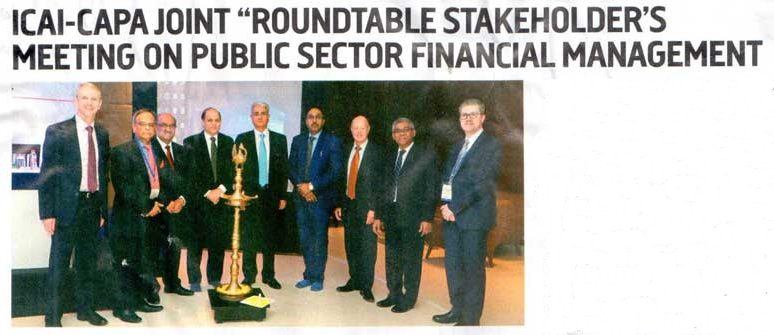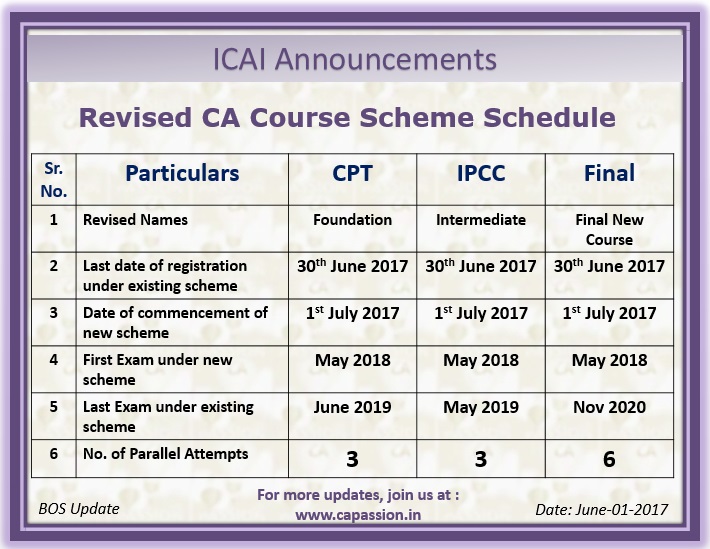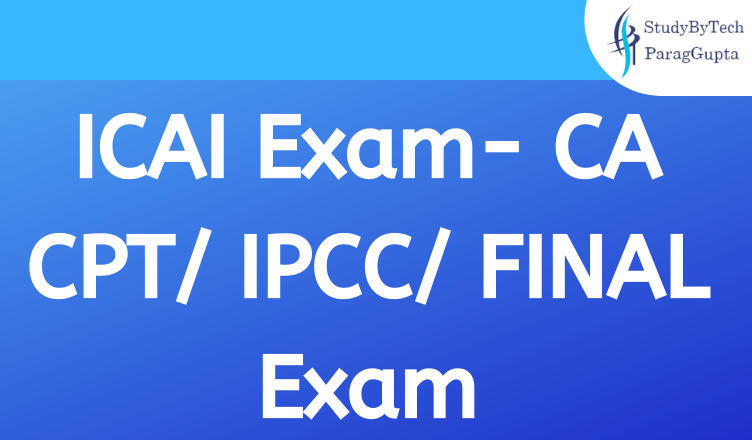If you are searching for an ICAI CA Final course or a subject for a new course, then you are landed on the correct page. The Whole syllabus of the CA Final is divided into 2 groups, which are further divided into 8 subjects. Every paper contains 100 marks and you will need a minimum score of 40% marks in each subject. ICAI CA Final Course – New Scheme of Education and Training Paper No. Subjects Paper 1 Financial Reporting Paper 2 Strategic Financial Management Paper 3 Advanced Auditing and Professional Ethics Paper 4 Corporate and Economic Laws Paper 5 Strategic Cost Management and Performance Evaluation Paper 6A Risk Management Paper 6B Financial Services and Capital Markets Paper 6C International Taxation Paper 6D Economic Laws Paper 6E Global Financial Reporting Standards Paper 6F Multidisciplinary Case Study Paper 7 Direct Tax Laws and International Taxation Paper 8 Indirect Tax Laws CA Final Final Course is the last level of CA Course. After qualifying both the groups of the Intermediate course, a student can get registered for C.A. Final Course. Candidate can appear in CA Final examination during the last 6 months of practical training. But before appearing in CA Final Exam, one has to successfully complete four weeks Advanced Integrated Course on Information Technology and Soft Skills (AICITSS) during the last two years of practical training. CA FINAL COURSE DETAILS Paper 1: Financial Reporting (Maximum 100 Marks ) It covers existing Accounting Standards (ASs) 15, 21, 23, 25, 27 and 28, Accounting Standards interpretations, Framework for preparation and presentation of Financial Statements in accordance with Indian Accounting Standards, Application of Ind AS with reference to general purpose Financial Statements, application of IFRS & US GAAP, Corporate Financial Reporting, Accounting for Consolidated Financial Statements of Group Companies, Share-Based Payments, Carbon Credits, E-commerce, Common defects in Financial Statements, Corporate Social Reporting, Human Resource Reporting, Integrated Reporting and Value Added Statements etc. Paper 2: Strategic Financial Managment (Maximum 100 Marks ) It Covers important concepts relating to Strategic decision making, financial policy, Risk evaluation & its classification, value at Risk (VAR) Security analysis, and its Valuation, Portfolio analysis, Capital Market theory, Securitization, Mutual funds, Derivatives, Foreign exchange, international financial management, etc. Paper 3: Advanced Auditing & Professional Ethics (Maximum 100 Marks ) It Covers Auditing Standards, Statements, Guidance Notes, Audit plan, Audit Programme and importance of Supervision, Risk Assessment and internal control, Special Aspects of Auditing in an Automated environment, Audit of Limited Companies, Audit Reports, Audit Reports & Certificates for special purpose engagement, Audit Committee and Corporate Governance, Audit of Consolidated Financial Statements, Special features of Audit of Banks, Insurance & Non – Banking Financial Companies, Audit under fiscal laws, Special audit assignments, Audit of Public Sector undertakings, and concepts related to Professional ethics etc. Paper 4: Corporate and Economic Laws (Maximum 100 marks) This paper has been divided into two parts : Part I: Corporate Laws (70 Marks): This has two sections Section A: Company Law It Covers the entire provisions and relevant Rules & Regulations of the Companies Act, 2013 regarding appointment and Qualification of Directors, Appointment and remuneration of Managerial Personnel, Meetings of Board and its Power, Inspection, Inquiry and Investigation, Compromise, Arrangement and Amalgamations, prevention of oppression and Mismanagement, Winding up, Producer Companies, Companies incorporated outside India , Compounding offences, adjudication, special Courts, National Company Law Tribunal and Appellate Tribunal etc. it Covers also Corporate Secretarial Practices like Drafting Notices, Resolutions, Minutes & Reports etc. Section B: Securities Laws It includes The Securities Contract (Regulation) Act, 1956 and the Securities Contract (Regulation) Rules, 1957: introduction and important provisions. The Securities Exchange Board of India Act, 1992, SEBI (Issue of Capital and Disclosure Requirement) Regulation, 2009 and SEBI (Listing obligations and Disclosure Requirement) Regulations, 2015. Part II: Economic Laws (30 Marks)It Covers “ The Foreign Exchange Management Act, 1999, The Securitisation and Reconstruction of Financial Assets and Enforcement of Security Interest Act, 2002, the Prevention of Money Laundering Act, 2002, Foreign Contribution Regulation Act, 2010, the arbitration and Conciliation Act,1996, the Insolvency and Bankruptcy Code, 2016 Paper 5: Strategic Cost Management and Performance Evaluation (Maximum 100 marks) It contains concept of Strategic Cost Management, Limitations of Traditional Cost Management, Characteristics of the Modern Business Environment, Cost of Quality, TQM, Supply Chain Management, J/T, Kaizen Costing, Total Productive – Maintenance, Six Sigma (SS), Cost Control, Cost Reduction, Pareto analysis, value Analysis, Life Cycle Costing, Power Sector, Relevant Costing, ABC Costing, Theory of Product Pricing, Pricing – New Product, Sensitivity analysis, Pricing Strategies, Transfer pricing, Responsibility Accounting, Budgetary Control, Standard Costing, and Application of few Quantitative Techniques like Linear Programming, Learning curve / Experience Curve. Paper 6A: Risk Management (Maximum 100 marks) It includes the concept of Risk, Risk, and uncertainty; Distinction, classification of risks, Dynamic Nature of Risks, Types of Risk, Sources and Evaluation of Risks, Concept of Risk Management, objective and process of Risk Management, Risk Management Techniques, Quantitative analysis, Risk Model, Credit Risk Measurement and Management, Risks associated with Corporate Governance, Enterprise Risk Management, Operational Risk Management etc. Paper 6B: Financial Services and Capital Markets (Maximum 100 marks) It contains information to Global Financial Market, Role of Financial Market in Economic Development, Indian Financial Market Scenario, Credit policy of R.B. I, Fed Policy, Inflation Index, CPI, WPI etc. Primary Capital Market, Secondary Capital Market, Money Market ( CRR, SLR, MIBOR, LIBOR etc.), Institutions and Intermediaries, Commodity market, Banking – Management, Mutual Fund etc. Paper 6C: International Taxation (Maximum 100 marks) It Covers various concepts of Transfer pricing Provisions under the Income Tax Act, 1961, like concept of Arm’s length price, international transactions, functions, Assets and Risk Analysis, Documentation & Compliances, other provisions relating to taxation of international transactions and Non – resident taxation under the Income-tax Act, 1961, Non – resident taxation, Double taxation relief and Advance – Ruling, Law and procedures under the Black Money (Undisclosed Foreign Income and Assets) and imposition of Tax Act, 2015, other Aspects of International taxation – Model tax conventions, tax treaties,










